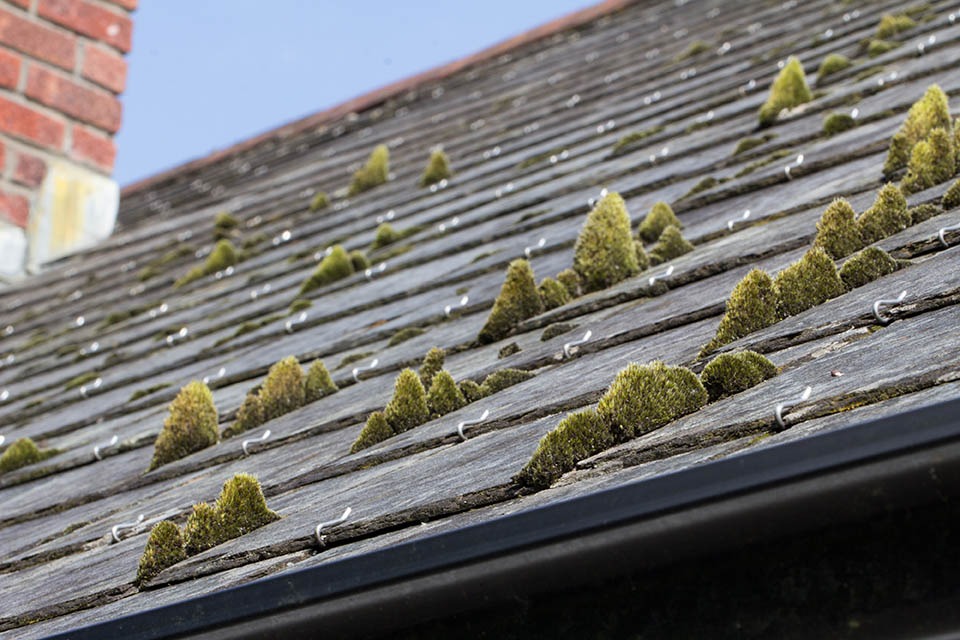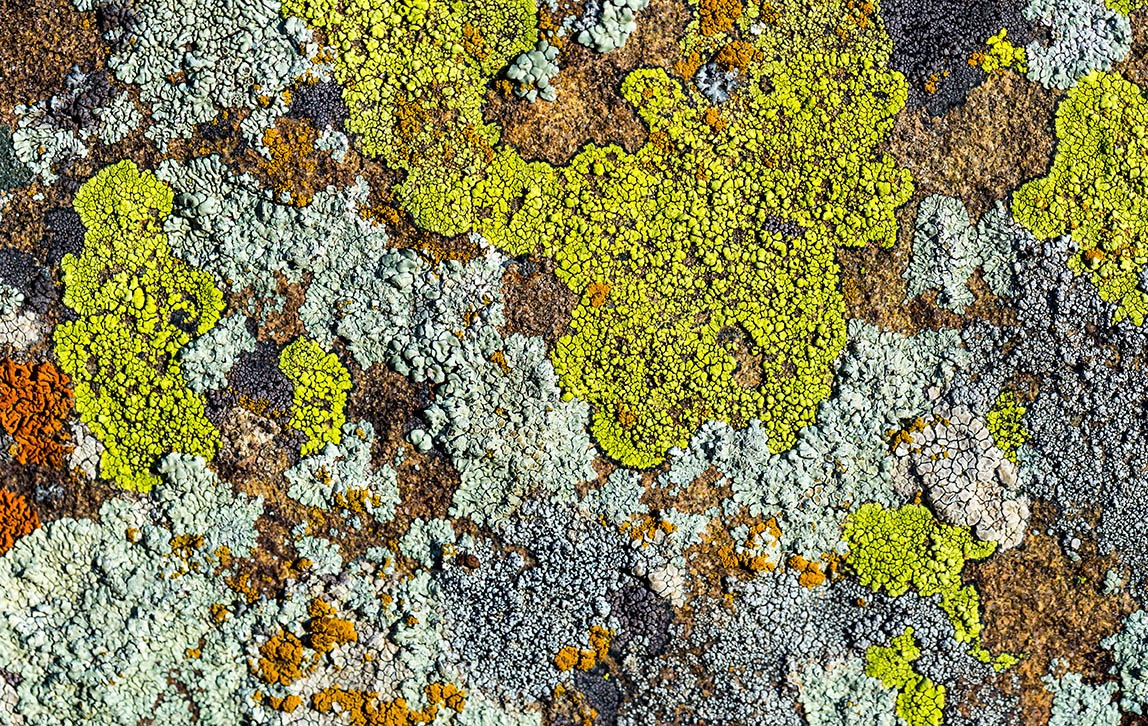How to Clean an Extra Dirty Roof
The most common problem that shingle roofs face are the black streaks caused by Gloeocapsa Magma, a type of algae that feeds on the limestone aggregate from roofs and can cause damage if not removed. The Asphalt Roof Manufacturing Association says that the most effective way to remove the algae is with bleach. You can find more about the right roof cleaning solution here. As we explain in that piece, going too hot with your sodium hypochlorite/water mix is not going to get the roof cleaner, and you’re at a greater risk of damaging the plant life below the hotter you go. If you have an extra dirty roof, you may want to hit trouble spots twice.
Algae, however, is not the only thing that can make roofs dirty. Let’s look at some other problems and how to clean them.
How to Clean Moss and Lichen From Roofs
Moss primarily grows on roofs in cooler, wetter areas of the country. Moss is a non-vascular plant, meaning they spread through spores, not seeds, and they gather water through their leaves, rather than roots. That’s why they can grow and spread on roofs.
Moss tends to grow on north-facing roofs because they receive less direct sunlight and stay damp longer. Tree branches that hang over roofs can also help moss grow and thrive. Left untreated, moss can damage shingles by causing the edges to curl or lift, as well as lead to moisture damage.
Lichen is another organic growth problem in some parts of the country. Lichen is a light, mint-green invasive organism that combines algae and fungus. Left untreated, lichen can cause pitting because it has strands that penetrate into the shingles, and because it also holds on to moisture. The result can lead to bent, warped, and damaged roof tiles.
Like with algae, the best way to remove moss and lichen is by using the appropriate roof mix of sodium hypochlorite (bleach), water, and a surfactant like Sticky.
Before washing, you may want to gently go over the roof with a soft-bristled brush. You can do this by getting on the roof, working from a ladder, or using a pole with a brush from the ground. Brushing can remove any moss and lichen that is already loose or dead, and make it easier to clean off the rest. You just want to be careful so that you don't remove roof granules.
Unlike algae, killing moss and lichen takes longer and may need to be hit a couple of times. You need to let your mix stay on the moss for at least 15 to 20 minutes before rinsing, and for that, you need a surfactant, like Sticky, that will really allow the mix to cling. Unlike algae, moss will typically not rinse off immediately. It has to have time to die. It may also require more than one treatment, and may have to be blown off with a leaf blower.

Moss on roofs can damage shingles by causing the edges to curl or lift.

Lichen on roofs can cause pitting, leading to bent, warped, and damaged roof tiles.
Cleaning Dirty Clay Roof Tiles
For clay roof tiles, we still recommend using the soft washing process rather than pressure washing. Clay tiles can attract the same algae, moss, and lichen, as well as inorganic contaminants that shingled roofs collect. Soft washing with the right sodium hypochlorite mix and a surfactant like Sticky that will cling tot he roof is your best option.
If the tiles are especially dirty, you can brush them with a hard-bristled brush and use a leaf blower to remove the excess dirt, like in the video shown. Just be careful! Clay tiles are very slippery, and they also are not designed to walk on. You'll need to be sure to use the correct safety equipment for roof work then be extra careful when walking the roof.
How to Help Roofs Stay Cleaner
Trim Trees
Trimming branches back so they don't cover the roof helps reduce the amount of debris that lands on the roof, and also increases the amount of sunlight that reaches the roof, both of which deter moss and lichen growth.
Clean the Gutters
Keeping gutters cleaned promotes proper water drainage, which can go a long way toward keeping moss and lichen from growing, not to mention prevent other serious damage to the home. If you don't already offer gutter-cleaning services, it's a great add on service.

